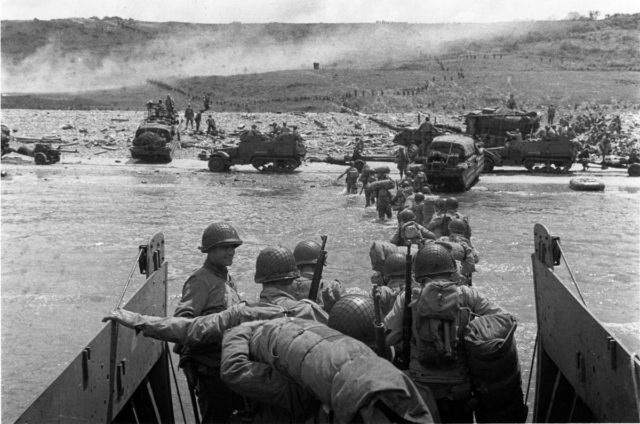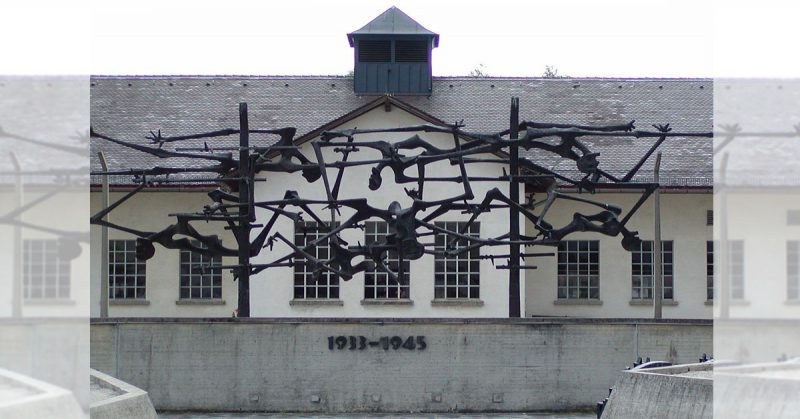When Hans G. Reif was 10 years old and living in Stuttgart, Germany, his class was taken outside to see Adolf Hitler waving from a distance.
He doesn’t remember much more than this.
A few years later, his father was packing the family up to move to America. Their family was Jewish, and it was clear by this time what the official Nazi party feelings were toward the Jews.
Fortunately, the Reifs left Germany before the Holocaust which killed millions of Jews and others the Nazis deemed “undesirable.”
Reif is now 92. He remembers his father getting his license when they arrived in the US and beginning his medical practice in Niagara Falls in 1939.
When Pearl Harbor was attacked by the Japanese, Reif realized he would be going to war.
Three months after he turned eighteen, he was drafted. He had the choice of going to the European or the Pacific theaters of war. He chose Europe.
He fought in Africa before being assigned to the 3rd Infantry Division in Italy in November of 1943. Because he spoke German, he was assigned to field intelligence.
After training in Naples, they landed at the Anzio beachhead. They were unopposed on landing, but three days later, German reinforcements arrived, and they tried to push the Allies off the beach.
Five months later, the Allies pushed through the German lines and went on to take Rome on June 4, 1944.
Two days after that, the Allies began the D-Day invasion. Rief’s brother, Peter, landed on Omaha Beach on D-Day. He was badly injured but survived to live to the age of 84.

Reif was also injured in the war, earning the Purple Heart twice. In France, a soldier set off a land mine, and Reif had a piece of shrapnel go through his arm. The second time was in Germany. A shell hit the building he was standing outside of, and part of the building fell on him, knocking him out. Fortunately, he had his helmet on, and he survived the experience with just some scratches and a headache.
As they traveled deeper into Germany, he was one of the first to see the horrors of the Dachau concentration camp just after it was liberated.
Outside of the camp were boxcars filled with people who had been sent from other concentration camps. Each had been shot in the foot to keep them from escaping. They had all died on the trip. Inside of the camp was more of the same, long piles of naked corpses.
The prisoners that were still alive were emaciated. “They were the walking dead,” Reif remembered.
If his father hadn’t insisted on moving the family when he did, Reif knows that he could have been one of those prisoners.
Reif continued south with his division. Eventually, they reached Berchtesgaden, the home of Hitler’s “Eagle’s Nest” retreat in the Bavarian Alps. That’s when the war ended.
Due to the combat points, he had earned from two amphibious landings, five campaigns and two Purple Hearts, Reif was allowed to come home early in September 1945.
He received his bachelor’s degree at the University of Buffalo, and his master’s in economics from the University of Minnesota. He worked at Cornell Aeronautical Labs for 25 years as an economist before becoming an economics professor at Erie Community College’s city campus. He retired from that position in 1996.
Ten years later, he came back to work as a part-time professor after his wife Thelma could no longer travel. They were married almost 48 years when she passed in 2015. They raised five children and have six grandchildren, The Buffalo News reported.
Reif still teaches one economics course a semester and speaks to the college’s World War II history classes.
Though it does not haunt him, he has never forgotten the horrors he saw at Dachau.
“Unfortunately, people do not realize that war is a series of atrocities,” Reif said.
